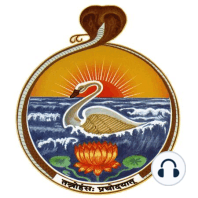59 min listen

12 – Using Actions to Turn away from the Senses | Patanjali Yoga Sutras | Swami Tattwamayananda
12 – Using Actions to Turn away from the Senses | Patanjali Yoga Sutras | Swami Tattwamayananda
ratings:
Length:
61 minutes
Released:
Feb 16, 2019
Format:
Podcast episode
Description
Lecture by Swami Tattwamayananda. Vairagya, dispassion, means saying no to sense pleasures and the instinctive tendencies of the mind. Four stages of Vairagya are described. The real meaning of Nirodha is not a wishing away of negative realities but putting an end to false identification. Tapah, self-control, Svadhyaya, self-study, and Ishvara-pranidhana, self-surrender constitute Kriya yoga. Tapah is not a military discipline, which brings the mind down to the level of the body. Svadhyaya means reading good books with a sense of sanctity while avoiding unhealthy mental food. The famous metaphor of the chariot and charioteer is used to explain the difference between letting the senses run our life and controlling our minds through a transcendental link. Verses: I.12, I.15, II.1
Released:
Feb 16, 2019
Format:
Podcast episode
Titles in the series (100)
21 - Why Do We Behave the Way We Behave? | Patanjali Yoga Sutras | Swami Tattwamayananda by Yoga Sutras and the World of the Human Mind